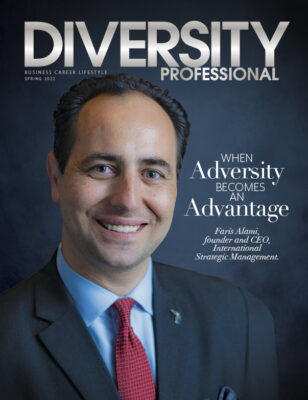Complete Health Care Begins With Comprehensive Dentistry

As successful leaders and supplier diversity professionals, we tend to focus most of our attention on our businesses and customers. We realize the importance of fostering in-person connections, so we often accept invitations to as many meetings as possible. Investing time into developing meaningful relationships and providing excellent service also means we tend to put ourselves, specifically our health, on the back burner.
A maven in the world of dentistry, Dr. Hazel Glasper, D.D.S., reminds us why taking time out to care for our oral health naturally feeds into taking care of our business. Maryland-based Dr. Glasper, an ambassador for the American Health Association, has been practicing dentistry since 1991. She is a clinician, engineer and artist of dentistry who has studied with many of the best industry thought-leaders in the field.
Drawn to dentistry after an eye-opening conversation with a classmate from Spelman College, Dr. Glasper realized the depth and complexity of the field beyond what many see on the surface. She made it her business to discover what this bigger and greater thing was; for her, it was comprehensive dentistry, Dr. Glasper said.
Today, Dr. Glasper’s entire practice philosophy is based on health, function and aesthetics. She has made it her life’s mission to not only fix a person’s tooth or smile, but to improve their quality of life by educating them about the connection between their oral health and their overall health.
Dr. Glasper’s passion for helping patients has translated into the Teach Me Dental Campaign. This endeavor was created to address the dental health crisis by reframing the conversation about the importance of oral health. Dr. Glasper stated she hopes to rebrand dentistry and create real value through oral health care.
ASIDE FROM AESTHETICS, WHY IS DENTAL CARE SO IMPORTANT?
Restoring health to the oral structures and overall system is most important. Function is a necessity as well. This system is crucial to our survival, but often an afterthought.
Try to breathe without it. Try to eat without it. It is in close or direct vicinity to the lungs and other vital organs that all work together for life. Aesthetics should be a big consideration because how you look matters. Yet, it cannot be the primary focus.
WHAT ARE THE EFFECTS OF POOR DENTAL CARE?
Two of the most common conditions or diseases found in the U.S., and probably worldwide, are gum disease and dental decay. Gum disease can be found in approximately 80 percent of the population, and dental decay, which in prevalence is second to the common cold, is found in 90 percent of school age children and almost 100 percent of adults.
Gum disease is linked to strokes, heart attacks, high blood pressure, premature births and deliveries, Alzheimer’s, rheumatoid arthritis, impotence, prostate issues and increases in certain cancers in men. It has also been associated with breast and esophageal cancer.
Dr. Glasper cited an example of an everyday, working professional who struggled with dental care. She then detailed how she helped correct the problem:
A 60-year-old gentleman was presented to Dr. Glasper’s practice with missing teeth, extensive decay, swollen gums and poor aesthetics. An extraction of the teeth was performed, including removal of all decay, and he was also treated for gum disease.
The patient was shown proper brushing technique and subsequently followed up for two, four and six weeks. However, the gum tissue was still enlarged.
Dr. Glasper’s office contacted the dental patient’s cardiologist to ask that he be taken off his blood pressure medicine. His doctor did not comply until photos were shared with him. He took the patient off the medication the same day. After switching to a different type of medication, the patient’s oral hygiene improved, and his gums became healthier. This transformation led to the patient’s newfound confidence, which allows him to thrive in all aspects of life.
Ninety-five percent of systemic diseases have oral manifestations. In this case, interprofessional collaboration was key. Working as a team improved this patient’s quality of life. A dentist can be the first to diagnose a condition.
HOW CAN SITUATIONS LIKE THIS BE PREVENTED?
The problems or conditions can be prevented by early intervention. The conditions are 100 percent preventable if poor oral hygiene is the cause. Individuals must realize how important oral care is beyond toothpaste, bad breath or mouth rinse.
WHAT ADDITIONAL ADVICE DO YOU HAVE FOR OUR READERS?
Perception is everything. Not only does good oral health affect your overall health, it impacts your smile and can affect how you’re being perceived in business.
There is a dental health care crisis that does not just involve the underserved. It involves the educated, affluent, male/female, all cultures, ethnic and socioeconomic groups. Individuals should make sure they visit a comprehensive dentist who performs a complete exam, complete X-ray, photographs, oral cancer screening and full disclosure, so you can make an informed decision about your health.
Dr. Hazel Glasper’s Teach Me Dental Campaign has reached over two million people, increasing the education and awareness of the importance of oral health care. The campaign has been featured on CNN, WHUR 96.3 FM, Magic 102.3 FM, The Roland Martin Show, Sirius XM, Fox 5, Fox 45 and MSNBC. The campaign is partnered with the American Heart Association, Morgan State University, Wellness 101 and is affiliated with Maryland’s Women’s Expo.









